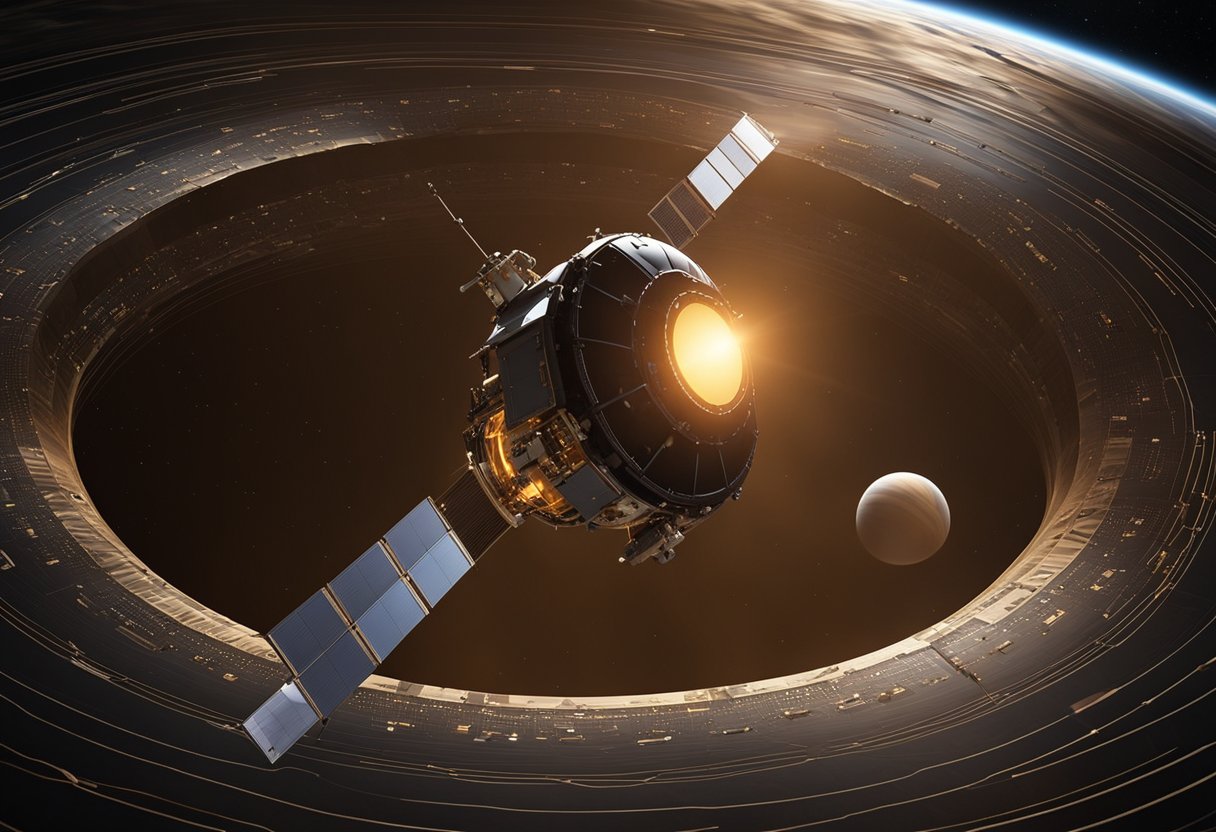
Unmanned Probes to Venus – In exploring the mysteries of our solar system, Venus has been a prime target for investigation. Our fascination with this celestial neighbour is driven by its similarities to Earth, yet it hosts an environment radically different from our own. As we’ve sent unmanned probes to Venus, we’ve uncovered valuable data, enhancing our understanding of not only Venus itself but also broadening our knowledge of planetary formation and dynamics. These missions, which have spanned several decades, stand testament to our relentless human curiosity and the desire to reach beyond the confines of our planet.
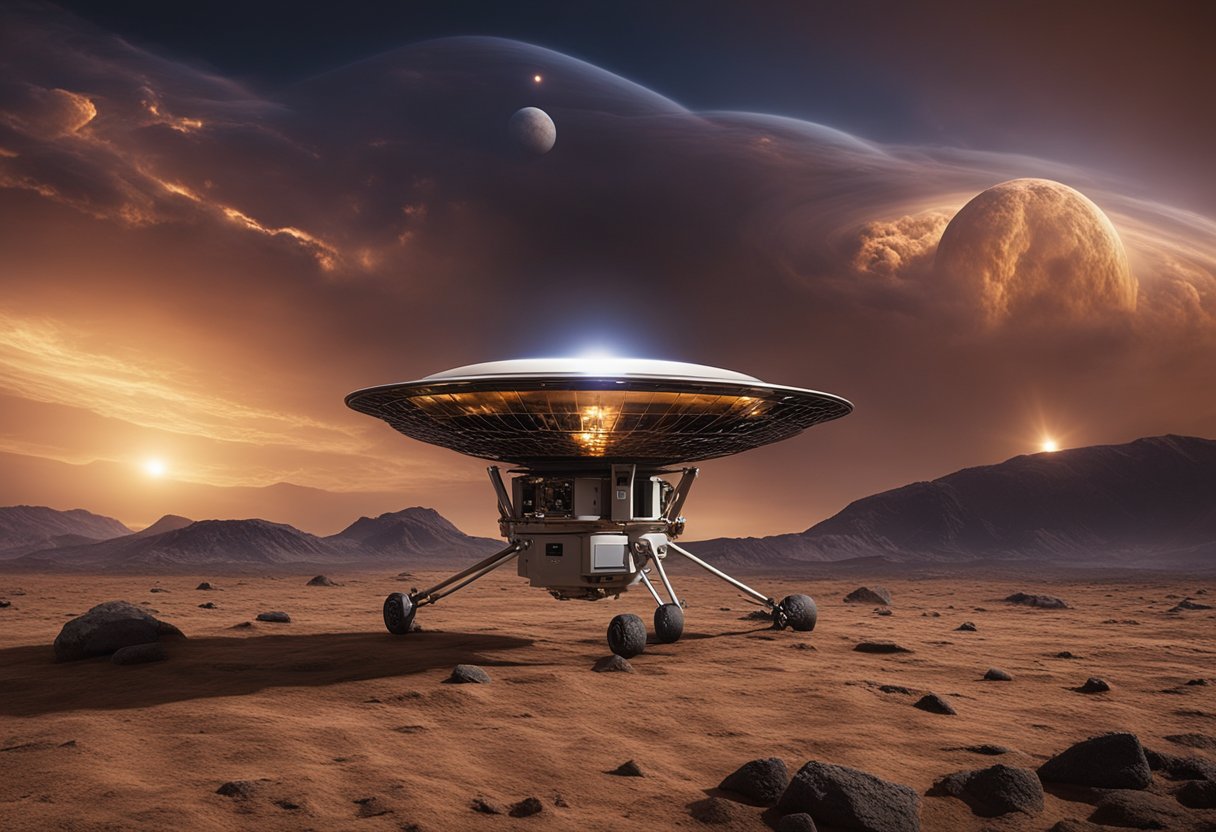
Technological advancements and scientific discoveries from these expeditions have provided us with a detailed glimpse of Venus’s extreme surface conditions, composition, and atmospheric behaviour. The harsh environment of Venus, with surface temperatures sufficient to melt lead and atmospheric pressure overwhelmingly crushing, presents quintessential engineering challenges. To conquer these, we’ve developed robust and complex technologies capable of surviving and functioning in such punishing conditions. The insights gleaned from these missions to Venus have been foundational, feeding into our broader understanding of planetary science and aiding the development of future interplanetary endeavours.
The exploration of Venus has provided significant insights into the conditions and history of our neighbouring planet. Through numerous missions, starting with early flybys and progressing to advanced landings, we have progressively unravelled the mysteries of the Venusian atmosphere and surface.
The Space Age catalysed humanity’s curiosity to explore Venus, marking an era of remarkable astronomical achievements. The first successful flyby mission to Venus was Mariner 2, which passed the planet at a distance of about 34,000 kilometres on 14 December 1962. The mission returned valuable data about the Venusian atmosphere and surface temperature. Soon after, both the US and the Soviet Union initiated several missions which either missed their targets or failed shortly after launch, including Sputnik, Tyazhely Sputnik, 2MV-1 No.1, 2MV-1 No.2, 2MV-2 No.1, 3MV-1 No.2, Kosmos 27, Kosmos 96, and Kosmos 359.
The Soviet Union’s Venera program became especially noteworthy when Venera 1, launched in 1961, became the first spacecraft to fly by Venus, although it lost contact before delivering data. Subsequent missions increased in sophistication. Venera 7 achieved the first successful soft landing on another planet and transmitted data from the Venusian surface for 23 minutes. Venera 9 and Venera 10 returned the first images from the surface of another planet. With Venera 13 and Venera 14, the Soviets obtained the longest direct measurements from the Venusian surface, enduring over two hours amid the hostile conditions.
Throughout the Space Age, advances in technology have significantly propelled our capacity to explore Venus. The Pioneer Venus project consisted of two separate missions. Pioneer Venus 1, or the Orbiter, began studying the Venusian atmosphere in 1978, and Pioneer Venus 2, or the Multiprobe, sent four separate probes into the Venusian atmosphere. The Vega program, with Vega 1 and Vega 2, combined exploration of Venus with a comet flyby and deployed landers and balloons to study the [Venusian atmosphere](https://science.nasa.gov/venus/exploration) in 1984-1985. More recently, the European Venus Express orbiter has provided a wealth of data about the planet’s atmosphere and climate patterns since arriving at Venus in 2006.
In studying the rich history of Venus exploration, our understanding of the planet’s geology, atmosphere, and potential for past habitability has significantly evolved. These missions have laid the groundwork for future exploration and potential ventures like those envisaged by SpaceVoyageVentures.com.
We explore Venus to unlock the secrets of its atmosphere, investigate the mysteries of its surface, and establish patterns through long-term observations. Our investigations are driven by advanced technology, including radar, cameras, and atmospheric probes, to gather colour images and data on the planet’s surface temperature, pressure, and chemical composition.
Utilising atmospheric probes, we ascertain the chemical composition of Venus’s dense atmosphere. Instruments onboard these probes measure gases and other elements to understand the atmospheric pressure and composition. The data reveal insights into the dynamics of Venusian weather and provide clues as to why the planet’s greenhouse effect is so extreme.
Robotics and radar technology enable our surface exploration. Our goal is to map the Venusian topography, analyse its geological features, and record the surface temperature that can climb high enough to melt lead. The Venus Exploration Goals, Objectives, Investigations, and Priorities report details our strategic approach to these challenging investigations.
Through continuous long-term observations, we monitor Venus’s magnetic field and atmospheric patterns. This endeavour yields valuable information about the evolution of our planetary neighbour within the solar system. Such extended analysis helps us understand how Venus’s current state reflects on its past and can provide insight into Earth’s future.
In our exploration of Venus, technological advancements have been central to the success of unmanned probes. Innovation in landing technologies and communication and imaging systems has been pivotal.
Achieving a soft landing on Venus presents immense challenges due to the planet’s dense atmosphere and high surface temperatures. We utilise advanced parachutes and robust heat shields to slow down entry vehicles, which must withstand harsh conditions. The development of materials capable of enduring Venus’s extreme environment is critical, ensuring the probe’s electronics remain operational long enough to collect and transmit valuable data.
Our probes are equipped with state-of-the-art electronics and telemetry systems to send radio signals back to Earth. The vast distance between Venus and our planet necessitates powerful transmitters and sensitive receivers. Recent advancements include the integration of synthetic aperture radar (SAR) to penetrate Venus’s thick clouds, allowing for detailed surface imaging.
In comparing unmanned probes to Venus with those sent to other celestial bodies, we see distinct challenges and objectives driven by each planet’s unique environment and scientific interest.
Mars has been a focal point for the United States and the European Space Agency, with a myriad of rovers and orbiters aiming to unravel the planet’s secrets, particularly the past presence of water and the potential for past or present life. Where probes to Venus concentrate on studying a hostile atmosphere and a volcanic landscape, Mars missions have been able to deploy surface rovers such as Curiosity and the more recent Perseverance, which navigate relatively benign conditions to collect data directly from the Martian soil.
Mercury, being the closest planet to the Sun, presents its own set of extreme conditions for exploration. Unlike Venus, where probes like those mentioned by The Planetary Society grapple with crushing atmospheric pressure and lead-melting temperatures, missions to Mercury such as the joint ESA and JAXA’s BepiColombo face challenges of proximity to the Sun, including intense solar radiation and gravitational issues. The study of Mercury provides insights into the formation of our solar system, while the exploration of Venus gives us a deeper understanding of climate dynamics and the evolution of a planet with striking Earth-like features in its ancient past.
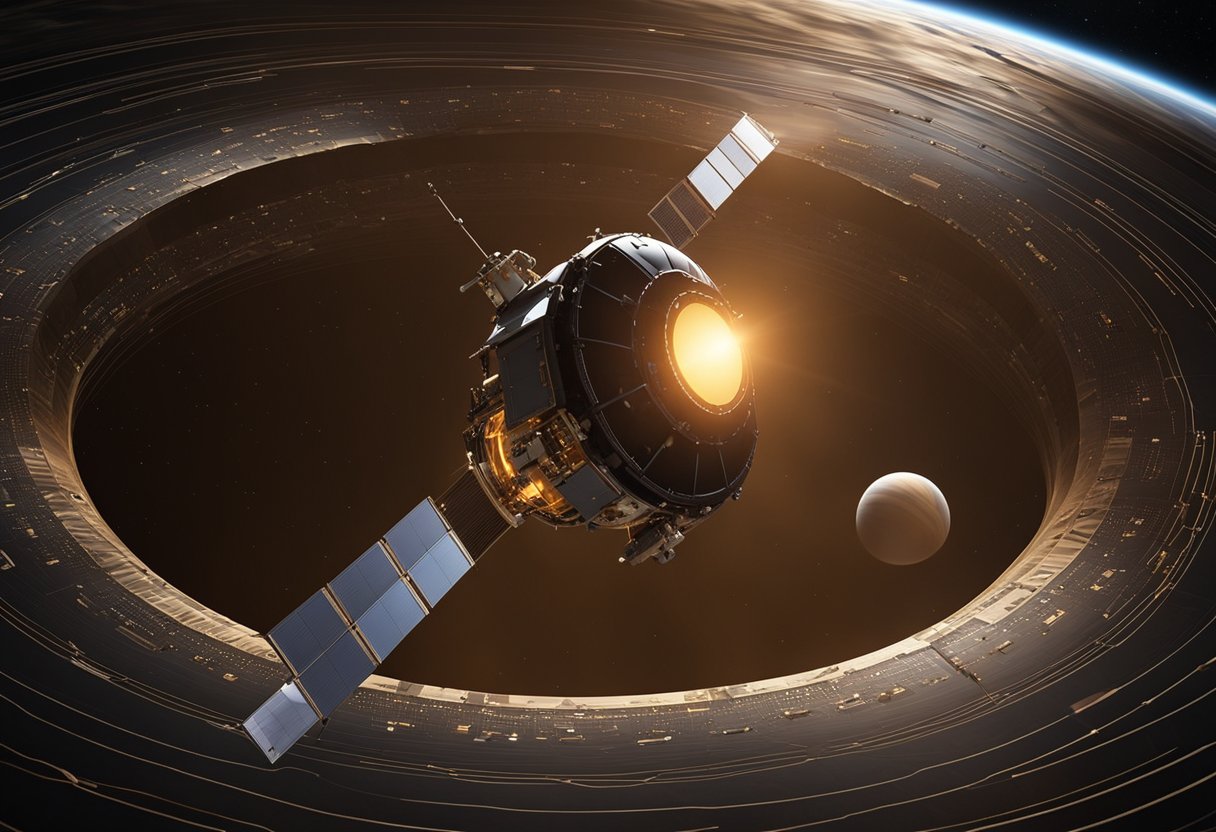
Our exploration of Venus has featured various mission profiles, each with specific objectives and designs tailored to endure the hostile environment of our neighbouring planet. These missions can be categorised into orbiters, landers, and flyby probes, all playing crucial roles in our quest to learn more about Venus.
Orbiters are spacecraft designed to enter a heliocentric orbit around Venus, allowing for prolonged periods of study. Our capabilities in this area have evolved significantly since the initial missions. To illustrate, one notable spacecraft was the Soviet 4V-1 No.310, which, although it failed to reach its destination, paved the way for future endeavours.
In contrast, landers undertake the daunting task of making contact with the Venusian surface. Although their operational time is brief due to Venus’s harsh conditions, they provide invaluable data. The first successful touch down was performed by 3MV-3 No.1, also a Soviet mission, which despite crashing, delivered critical information about the Venusian atmosphere.
Lastly, flyby probes like Zond 1 do not attempt to orbit or land but instead perform a close flyby of Venus, gathering data as they pass by. These missions help us understand the planet’s place in the solar system, observing it from a flyby spacecraft in heliocentric orbit before moving on to other destinations.
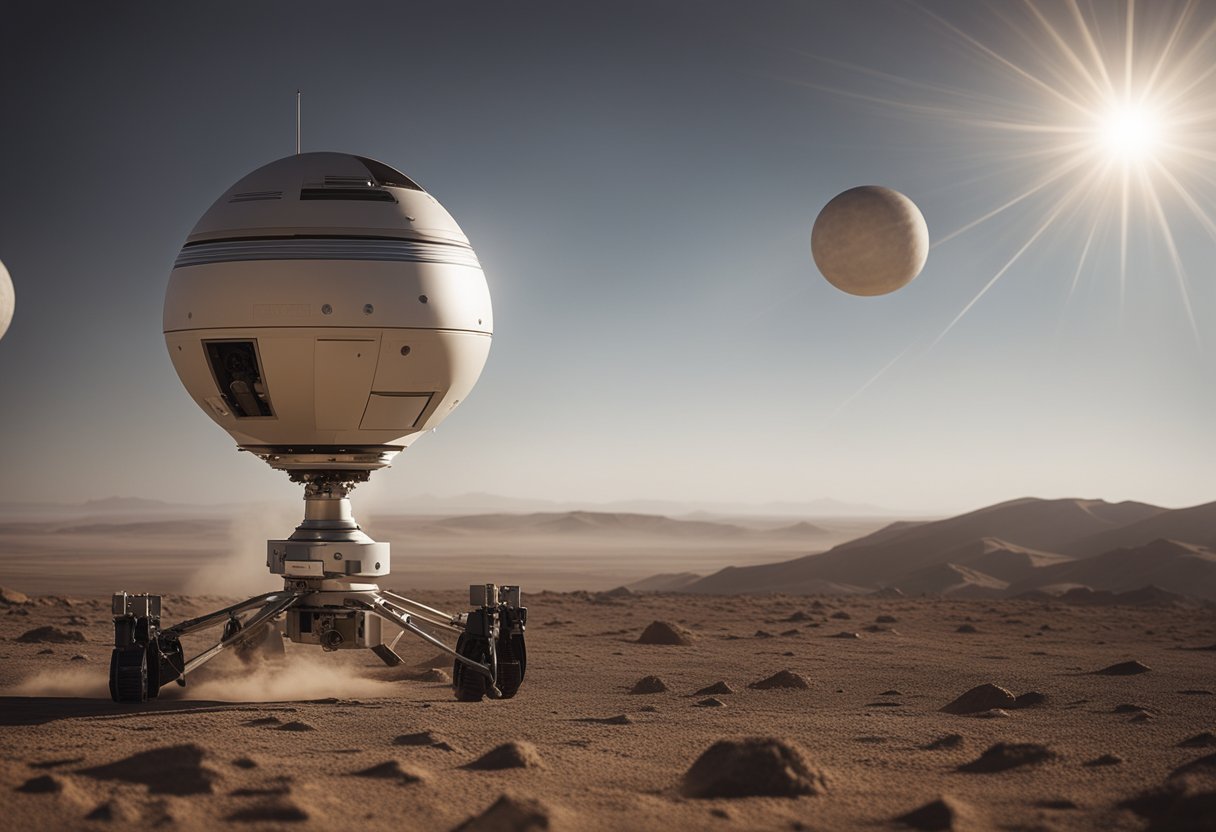
Exploring Venus presents us with unique and formidable challenges, primarily due to its extreme environmental conditions and the intricate requirements for successful technical operations and communications.
The surface of Venus is characterised by incredibly high temperatures that average around 465°C—hot enough to melt lead. Additional to the blistering heat, the surface pressure is a crushing 92 times that of Earth at sea level. This combination creates a hostile environment that can destroy conventional electronics and materials, making long-term survival of landers or rovers difficult. The Venus surface missions have to be equipped with specialized cooling systems and robust materials that can withstand these conditions, not to mention the corrosive atmosphere composed predominantly of carbon dioxide, with clouds of sulfuric acid.
Successful operation of unmanned probes to Venus requires overcoming significant technical and communication hurdles. The thick atmosphere of Venus can interfere with the radio signal, making it challenging to ensure reliable telemetry. Communication with Earth is delayed and commands must be carefully planned in advance. Ensuring the integrity of data transmission and maintaining operational control of a probe is a complex feat achieved through sophisticated engineering. The electronics on board must be designed to function without error in this harsh environment, involving advanced materials science and circuit design, as shown by recent advancements in Venus-compatible electronics.

In considering the future of unmanned exploration on Venus, we are presented with a slate of ambitious missions and the promise of extensive international cooperation. These efforts aim to further unravel the mysteries of our neighbouring planet.
Within the suite of forthcoming projects, DAVINCI+ and VERITAS stand as two pivotal NASA-led missions set to reveal the venereal environment in unprecedented detail. DAVINCI+ is tasked with analysing the atmospheric composition of Venus, providing a clear window into the planet’s current state and past evolution. On the other hand, VERITAS aims to orbit Venus and intricately map its surface, which could offer rich insights into its geologic history.
The Russian Venera-D mission stands out as another highly anticipated concept that seeks to build upon the legacy of the Venera programme. This endeavour strives not only to study Venusian surface and atmospheric dynamics but also to evaluate potential opportunities for future robotic presence.
European efforts, marked by previous missions like Venus Express, indicate a consistent interest in Venusian exploration. The European Space Agency (ESA) is poised to contribute significantly to forthcoming ventures, potentially partnering with other space-faring nations.
Our outlook on international collaboration paints an optimistic picture — one where the shared intrigue in Venus transcends borders. The United States and Russia maintain a storied history of venereal exploration and, coupled with ESA’s contributions, exemplify the collective endeavour to expand our knowledge.
Multinational partnerships also reliably extend the capabilities of individual missions, as seen with NASA’s collaboration on ESA’s Venus Express. These alliances enable the exchange of technology, expertise, and data, greatly benefiting the scientific community and enhancing mission outcomes.
As we advance, the synergy between nations and agencies like NASA, ESA, and the Russian Space Agency will undoubtedly be instrumental in propelling our understanding of Venus to new heights, as exemplified in reporting by outlets like CNN.
Given this trajectory, we maintain a confident yet measured perspective towards these forthcoming ventures, assured that they will deepen our comprehension of Venus akin to the valuable insights furnished by past missions.
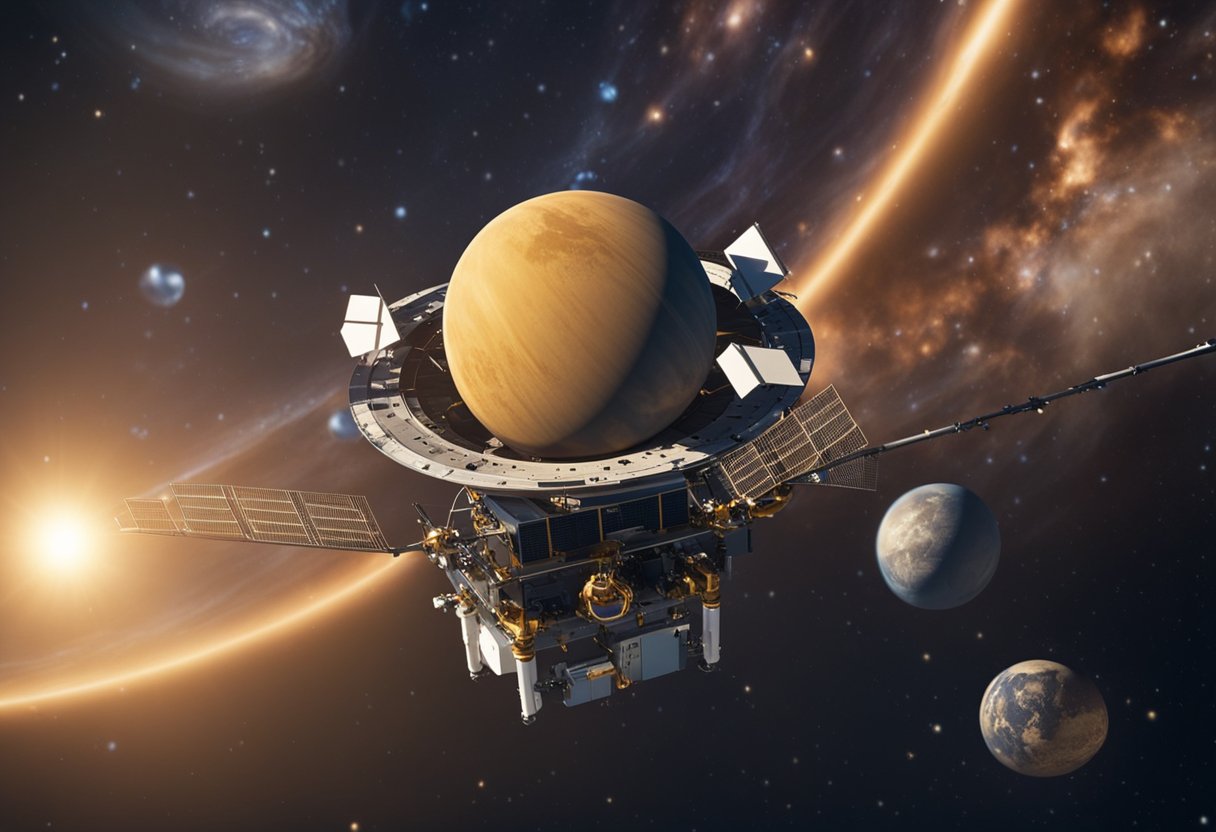
Unmanned probes to Venus have vastly expanded our understanding of the planet, providing critical data and igniting public interest in space exploration. These missions have catalysed both scientific advances and educational outreach efforts.
The deployment of unmanned spacecraft to Venus, such as the Venera series, has been pivotal in unveiling the planet’s extreme conditions and geological features. Astronomers have relied on these missions to study Venus’s thick atmosphere and surface, enhancing our knowledge of the solar system. Specifically, the data collected have established that Venus harbours a volatile atmosphere and a surface dominated by basalt, affirming its stark contrast to Earth. Crucially, these findings serve as a cornerstone for comparative planetology—providing a lens through which we examine planetary processes.
Our ventures to Venus have cultivated a significant impact on public engagement and education. Articles detailing the missions’ achievements captivate the public, drawing attention to the wonders and challenges of space exploration. For instance, the historic exploration of Venus by unmanned probes, as documented by The Planetary Society, showcases the adventurous aspect of space exploration and its ability to cross frontiers, sparking interest and inspiration across generations. Additionally, envisioning our future in space travel, as outlined by SpaceVoyageVentures.com, has an educative impact, enhancing space literacy and potentially fuelling the next generation of scientists and engineers.
In our pursuit to better understand our neighbouring planet, the efforts to visualise Venus have been both challenging and intriguing. The dense atmosphere has historically shrouded its surface from view, necessitating innovative approaches for imaging.
Visible-Light Photography:
The Parker Solar Probe’s cameras achieved a monumental feat by capturing visible-light images of Venus’s surface, a task long thought to be near impossible due to the thick cloud cover. The images we’ve gathered reveal a stark, shadowed terrain offering us glimpses into topographical features that were until recently, mere speculations.
The Venera Series:
From the Soviet Union’s Venera missions, the first black and white photos of Venus’s surface detailed a world of desolation, surrounded by rocks and a sky heavily cloaked in clouds.
Colour Images:
Though more challenging, obtaining colour images of Venus has provided us with crucial data. These images, although fewer, enhance our interpretation of the mineralogy and geology of Venus’s surface.
Instrumentation and Energy Spectrum:
Our cameras have come far from the early days. They now span a broad spectrum, from ultraviolet to thermal imaging, each providing unique insights into Venus’s atmosphere and surface. Instruments aboard missions like the Parker Solar Probe help us discern features invisible to the naked eye and probe the mysteries that Venus holds.
Future Prospects:
Looking forward, SpaceVoyageVentures.com has detailed how advanced probes and possibly even crewed missions might paint an even fuller picture of Venus. As we refine our cameras and imaging techniques, the prospect of gathering more detailed colour images and even high-definition videos of Venus grows more promising.

In this section, we explore select facets of comparative planetology, specifically focusing on the planet Venus in relation to Earth and the study of extraterrestrial oceans.
Venus, often dubbed Earth’s sister planet, shares a similar size and composition which is intrinsic to comparative planetology. Despite its proximity and physical similarities, the atmospheric and climatic conditions on Venus are vastly different, with an exceedingly thick atmosphere and surface temperatures enough to melt lead. Insights into Venusian meteorology offer a contrasting perspective to our Earth’s atmospheric sciences, as detailed in Nature’s report on solar system exploration. This reinforces our understanding of Earth’s place within the solar system, especially when considering both planets’ evolution from their formation to the present day.
When examining extraterrestrial oceans, we broaden our purview beyond Venus to include icy satellites and exoplanets. Our interest is particularly piqued by bodies of water beneath the icy crusts of moons, for instance, in the Jovian and Saturnian systems, which challenge our ocean-centric views of Earth orbit. Extraterrestrial oceans are key to unravelling the mysteries of life’s potential in the solar system, expanding our search for biological signatures to places once considered unlikely, as observed by missions outlined on SpaceVoyageVentures.com. The study of these oceans not only informs our knowledge of hydrological cycles but also acts as a mirror reflecting the uniqueness of Earth’s ocean and atmosphere within the broader tapestry of the solar system.
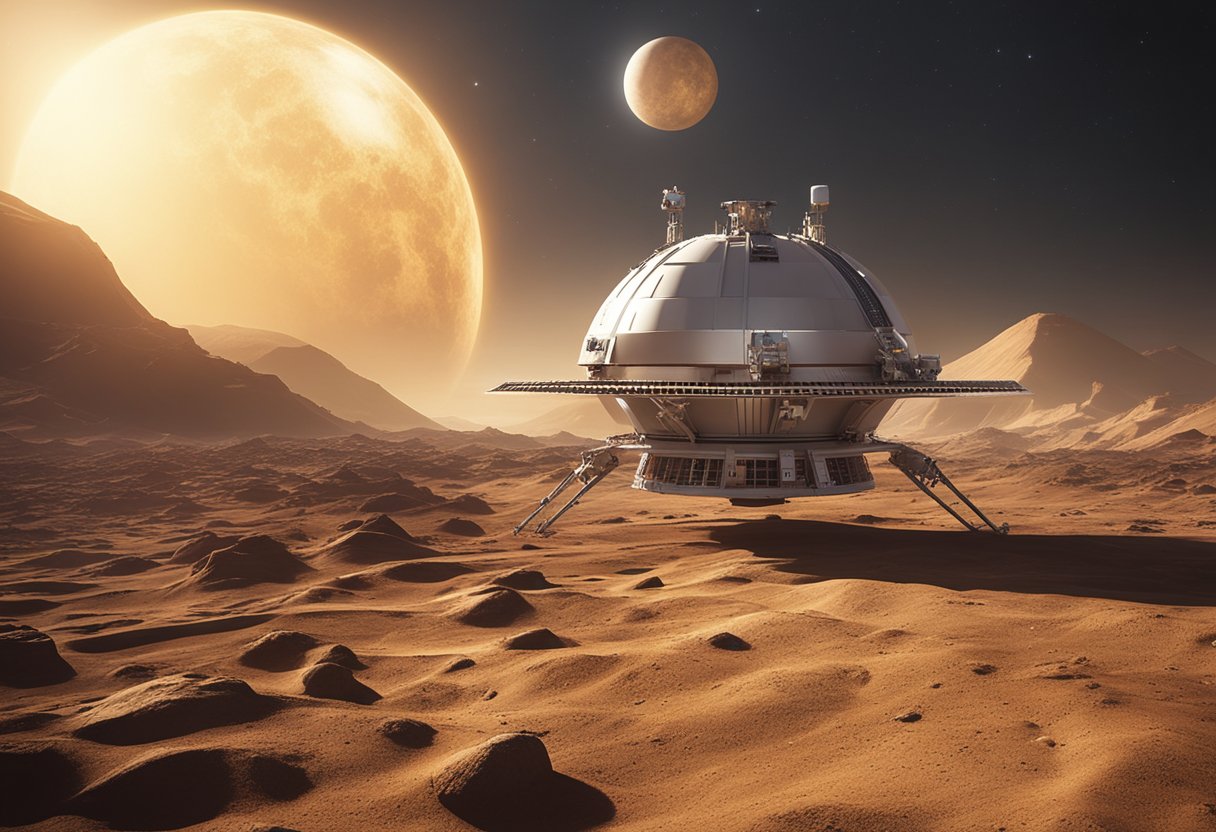
In this section, we explore some of the most common questions about unmanned probes to Venus, providing specific insights into historical missions, current knowledge, and future exploration plans.
The Venera missions, undertaken by the Soviet Union, aimed to gather data on Venus’s atmosphere, surface conditions, and other environmental details. These probes were among the first to transmit detailed images from the Venusian surface.
To date, more than 40 spacecraft have been sent to Venus, including flybys, orbiters, and landers from various space agencies around the world. These missions have significantly advanced our understanding of Earth’s closest planetary neighbour.
The Venera 7 mission was the first unmanned spacecraft to successfully land on Venus and transmit data back to Earth. Launched by the Soviet Union, it touched down on Venus in December 1970.
Several future missions to Venus are in planning stages by different space agencies, aiming to study the planet’s atmosphere and geological features. These include the European Space Agency’s EnVision mission and NASA’s proposed VERITAS and DAVINCI+ missions.
Yes, the United States has sent several unmanned probes to Venus, including the Mariner, Pioneer Venus, and Magellan missions. The Mariner 2 spacecraft, for instance, was the first successful flyby Venus probe, which gathered important data on the Venusian atmosphere.
The surface of Venus is an extremely hostile environment with crushing atmospheric pressure, temperatures exceeding 470°C, and clouds of sulfuric acid. Probes like those from the Venera and Vega programs have had to be robustly engineered to withstand these conditions for even a short duration on the surface.